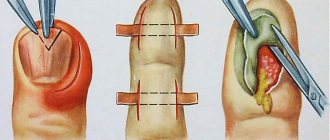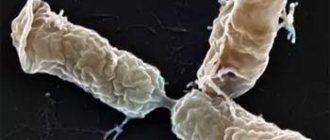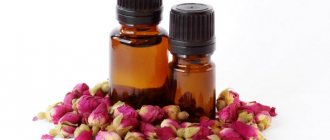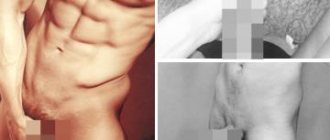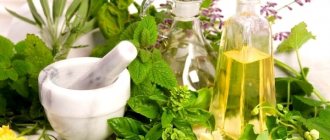Vasomotor rhinitis is a disease of the nasal mucosa in which a person loses their sense of smell and nasal breathing is impaired. For this reason, the patient has to breathe through the mouth, which leads to other diseases: symptoms of bronchitis, pharyngitis, and laryngitis appear. The function of the nose is that it regulates humidity, temperature and air filtration. If these functions are disrupted and a person breathes through the mouth, the gas composition of the blood changes due to lack of oxygen.
Causes
The development of vasomotor rhinitis begins in adults from the moment when the regulation of blood vessel tone in the nasal cavity is disrupted. A person feels constant nasal congestion. This can be caused by many reasons:
- the effect of high or low temperatures, the influence of atmospheric pressure;
- the nasal septum is deformed;
- stress;
- physical and sexual activity;
- the presence of hormonal disruptions during puberty and pregnancy;
- viruses;
- medications for the treatment of hypertension; use of oral contraceptives and drugs to regulate potency, psychotropic drugs;
- addiction to vasoconstrictor drops, which cause chronic dependence.
In children, the disease appears due to the development of adenoids, inflammation of the nasal sinuses and deviated nasal septums. However, treatment of rhinitis in children leads to complete disappearance of the disease.
Symptoms
The first symptoms of the disease appear as a result of a viral infection entering the nasal mucosa, which passes over time, but the mucus caused by them stagnates and contributes to the development of chronic runny nose.
The main signs indicating the presence of vasomotor rhinitis are:
- constant nasal congestion, especially when the person is lying down;
- fast fatiguability;
- sleep disorders;
- weakening of memory;
- frequent headaches;
- clear discharge of mucous secretion from the nose, especially in the morning;
- burning and itching sensation in the nose;
- frequent paroxysmal sneezing.
Timely treatment of vasomotor rhinitis will help prevent the occurrence of nasal polyps.
Types of vasomotor rhinitis
| View | Peculiarities |
| 1) Psychogenic | emotional stress, stress |
| 2) Hormonal | endocrine system disorders, pregnancy, puberty |
| 3) Ideopathic | its nature has not been studied |
| 4) Medication | preparations for external and internal use |
Table 1 Classification of types of vasomotor rhinitis
Many adults let the disease progress, resulting in advanced forms. In order to cure a chronic runny nose, it will take a lot of time and effort. First of all, it is necessary to establish an accurate diagnosis, based on the results of which treatment is prescribed.
Clinical manifestations
Regardless of the cause of its occurrence, this pathology has a characteristic clinical picture, which makes it possible to make a diagnosis already at the stage of the first visit to the doctor during an endoscopic examination of the nose.
Vasomotor rhinitis is characterized by the constancy or regularity of the appearance of symptoms indicating a disruption in the functioning of the vessels of the nasal mucosa.
This is expressed by the following manifestations:
- alternating nasal congestion on one side or the other - often appears in a horizontal position of the body, after drinking alcohol, doing physical work, when weather and climatic conditions change;
- runny nose with watery transparent snot, sneezing, lacrimation - more typical for the allergic form of vasomotor rhinitis;
- disruption of normal perception of aromas and odors;
- nasality;
- regular passage of mucus along the posterior pharyngeal wall;
- cough and sore throat every night;
- lack of noticeable effect from the use of vasoconstrictor nasal drops compared to the beginning of treatment;
- malaise, fatigue, headaches, impaired memory and attention, irritability, absent-mindedness.
It may also be interesting: What you need to know about allergic rhinitis in adults
During an ENT examination, typical manifestations of chronic vasomotor rhinitis are visible - pallor and cyanosis of the mucous membrane in the nasal passages, enlargement of the inferior conchae, their weak contraction in response to exposure to a vasoconstrictor drug, and deformation of the nasal septum is often detected.
Folk remedies
Herbal decoctions, lotions, and ointments based on natural plants help well. List of plants to combat nasal congestion:
- aloe;
- nettle;
- birch;
- sage;
- chamomile.
Calendula
This plant has always been indispensable in the treatment of rhinitis as it has anti-inflammatory properties. Judging by the reviews of users of this medicine, we can conclude that congestion really goes away and this process is painless and often leaves no traces of itself. Calendula infusions are made for masks and compresses:
- take a tablespoon of flowers
- pour half a liter of boiling water and leave
- prepare the tincture for half an hour
- Next, we filter the contents and rinse first one and then the other nostril in turn.
- To rinse the nose, it is recommended to use a syringe without a needle. With the help of tincture, capillaries are strengthened and blood vessels are cleansed.
Aloe
Aloe is one of the most effective centuries-old treatments. The plant has a large number of healing properties. To treat chronic runny nose with aloe, tinctures are used for both internal and external purposes.
External use
A simple recipe has long been used to treat nasal congestion: take one tablespoon of aloe juice and add two drops of essential oil (rosemary, eucalyptus, tea tree, fir). Problem areas are wiped for a long time two or three times a day.
You can also wipe the sinuses with a decoction: pour a glass of boiling water into four tablespoons of aloe, cook the mixture for 15 minutes over low heat, stirring constantly. The solution should then be filtered and ultimately used to treat the body.
Making a mask
Two tablespoons of crushed aloe leaves should be poured with one teaspoon of lemon juice and one egg white should be added to this mixture. The mask is applied for ten minutes over problem areas; dermatologists recommend using it no more than twice a week.
Drops for internal use
To prepare nasal drops from aloe, you need:
- take leaves of a plant three years old (it is believed that it is at this age that the plant acquires its greatest strength),
- wrap them in newspaper and put them in the refrigerator for 3 days
- after which, cut off the outer shell, wrap it in gauze and squeeze out the juice.
- It is worth noting that the drops should be stored in the refrigerator for no more than 10 days, since the plant loses its beneficial properties over time.
Teaching your nose to breathe again
It would be strange not to pay special attention to breathing exercises for diseases of such an important respiratory organ as the nose. At the same time, for effective treatment, sessions should be carried out several times every day. Take this exercise very carefully and seriously:
Sit in a comfortable position with your back straight. The index finger of the hand is straight above the bridge of the nose, the thumb is on the wing of the right half, and the middle finger is on the wing of the left half. Exhale completely through your nose and immediately pinch your nasal passage with your thumb. Inhale through the left passage for 4 seconds and hold it. Hold your breath for 8 seconds and release your right nostril, exhaling slowly.
The duration of exhalation should be twice as long as the duration of inhalation. After resting for 10 seconds, the same is repeated with the right move. And so 10 approaches. By repeating this breathing exercise several times a day for 1 month, you can even get rid of chronic rhinitis.
What is characteristic of this pathology is that signs of the disease can appear suddenly and then also suddenly disappear for a while. During an attack, several symptoms may appear simultaneously, and at the end, only a feeling of congestion remains.
Before treating vasomotor rhinitis, you must first figure out what exact cause could provoke the disease, consider the following:
One of the most common causes is VSD (vegetative-vascular dystonia). Severe overwork and constant stress. Incorrect and frequent use of vasoconstrictor drugs, in particular, sprays and nasal drops. Hormonal changes in the body. Weak immunity. Viral infections. Poor quality of inhaled air (pollution, dust, etc.). Inhalation of damp or cold air. Contact with the nose due to inhalation of chemical or toxic substances. Exposure to various allergens can also trigger rhinitis (pollen, mold, pets, etc.).
Presence of allergic diseases (for example, asthma). Pathologies and mechanical damage to the nose (for example, deviated nasal septum). Frequently eating hot and spicy foods. Smoking.
Having an idea of what factor could trigger the onset of the disease, you can choose the right treatment. Folk remedies that allow you to get rid of the disease without resorting to complex medicine have proven excellent in the treatment of vasomotor rhinitis.
Many of our readers actively use
Monastic gathering of Father George
. It contains 16 medicinal plants that are extremely effective in the treatment of chronic COUGH, bronchitis and cough caused by smoking.
Other ways to combat vasomotor rhinitis
Home treatment methods are very diverse: in addition to aloe, nettle and beet juice, there are a huge number of ways to get rid of a runny nose. For example, very effective means are:
- saline solutions (per 1 liter of water - 2 teaspoons of salt to combat pathogenic microorganisms and complications);
- hawthorn tincture (2 tablespoons of berries per liter of boiling water, leave for 9 hours, take 200 g morning and evening);
- tincture of chamomile, oak bark, calamus, sage, St. John's wort (for half a liter of water - 2 tablespoons of herbs, pour boiling water and take one tablespoon 2 times a day);
- inhalation using essential oils (fir, mint).
Do not forget that folk remedies cannot always ensure the effectiveness of treatment; in some cases, self-medication ends in failure. Therefore, it is very difficult to treat vasomotor rhinitis at home without a puncture; the focus of inflammation remains and the help of a specialist is needed.
Physiotherapy
Physiotherapy is the use of movement, heat and water for therapeutic purposes.
Physiotherapy for vasomotor rhinitis is carried out in two ways, which are presented in Table 2:
| Method | Action |
| Puncture (puncture) | a medicinal cocktail is injected into the nasal sinuses by puncture |
| Removal of fluid (peek-a-boo operation) | A medicine is injected into the nasal sinuses with a syringe, flushing out their contents; under pressure, the contents are removed using a special tube |
Table 2 Physiotherapeutic methods
Treatment
In addition to drug therapy, today treatment of vasomotor rhinitis at home with folk remedies has become widespread. But before taking into account the advice of traditional medicine, you need to consult your doctor to avoid complications.
Today, non-traditional methods of treating the runny nose can rightfully compete with modern drug therapy. Moreover, treating vasomotor rhinitis at home is much easier and more convenient than constantly being observed by doctors or being in a hospital. In any case, before you start choosing a specific method, you need to make sure that it is suitable and will not harm the body, and for this you should first talk with your doctor.
Now you can find many proven and effective methods for treating rhinitis using simple recipes taken from folk medicine. Consider the following:
An effective remedy in the fight against pathology is calendula, used for rinsing the nose. What is needed: one tablespoon of this plant is poured into a large container and 200 ml of hot water is poured. The resulting liquid should be allowed to settle and become saturated with useful components - half an hour is enough.
Once it has settled, the prepared solution is filtered. You can rinse your nostrils using a syringe, a thin tube or a small syringe. It is enough to do the procedure at least a couple of times a day, rinsing each nostril in turn, 5-8 passes at a time. The duration of the course is one week.
Ordinary medical clay, which is sold in every pharmacy, will help cure vasomotor rhinitis at home. You need to take half a tablespoon of clay, soften it with regular hot water in the same amount. Heat the mixture over steam and let cool slightly. Then cover the nose area with any natural fabric, maybe several layers of gauze, and evenly apply the resulting clay mixture on top of it. Leave the clay until it has completely cooled. The effect is achieved by warming up and rushing blood to the upper facial part. Since a huge percentage of patients suffer from a false runny nose due to weakened immunity and the vegetative-vascular system, then to cure the pathology, remedies that will help normalize the functioning of these very systems are suitable. You need to take motherwort, hawthorn, cucumber and chamomile (in the ratio 4:4:4:1), put it in a bowl and pour in strong boiling water (1 tbsp. water for every three spoons of the mixture). Let it brew and consume a whole glass several times daily. Inhalation using potatoes. To do this, you need to boil the potatoes, immediately mash them directly in the boiled water and breathe over the steam. It is important to note that there is no need to cover your head with any towel to avoid creating a greenhouse effect, which can lead to swelling. This inhalation should be performed once a day for fifteen minutes. The course is no more than ten procedures. If necessary, the procedure can be repeated in a week.
Beetroot copes well with illness. Take a quarter of a medium beet, wash it, peel it and grate it. The resulting pulp should be squeezed out in gauze, and two small tampons should be moistened in the resulting juice, which are then placed in each nostril. The duration of the procedure is about half an hour, no more. It is carried out once a day. The course lasts one week, after which there is a break for another week, then the therapy can be repeated again. Dilute a tablespoon of any honey in one glass of warm water (the main thing is that it is natural). Stir thoroughly. After that, the resulting liquid must be rinsed through the nostrils several times a day. Another recipe using honey is to take two large spoons of honey, mix them with 1 tbsp. l. mint oil. Lubricate the inside of the nose with the resulting mass daily. Take sea salt at the rate of 1 tsp. for 1 tbsp. warm water, dissolve well, and rinse each nostril separately with the resulting solution for 5-6 passes. It is done 2 times a day, every other day, in the morning and in the evening. The course is one month. Take carrots, grate them, squeeze out the juice. For one spoon of the resulting mixture, add 3 drops of garlic juice and 3.5 tbsp. l. vegetable oil, preheated in a water bath. This mixture should be applied to the nose a few drops a couple of times a day.
Rinse the nostrils with chamomile infusion. To do this, you will need to brew 1 spoon of plant flowers in 250 ml of boiling water. The infusion should sit for at least thirty minutes. You can rinse your nose with the resulting mixture by sucking it into each nostril in turn through a thin tube, holding the liquid for 5-10 seconds. Make a healing mixture from plants for rinsing the nose. For this you will need oak bark (30 g), rowan (20 g), mackerel leaves (20 g), sage (5 g) and mint (5 g). Place the ingredients in a container and pour boiling water (1 tbsp.). Boil the broth for no more than ten minutes. Let cool and soak in the beneficial herbal ingredients for about an hour. Rinse the nostrils with the resulting infusion, one at a time, twice a day.
As you can see, treating vasomotor rhinitis with folk remedies does not cause any particular difficulties. The main thing is to choose the appropriate treatment option at home and simply follow the instructions.
Treatment with medications
Treatment of vasomotor rhinitis is possible at home, but if the disease becomes chronic, you cannot do without medication.
Vasoconstrictor drops for adults
Vasoconstrictor drops are used to relieve nasal congestion, but they should be used carefully and as prescribed by a doctor, as they can cause dependence and the development of vasomotor rhinitis in healthy people who abuse these drugs.
- Xymelin;
- Nazivin;
- Tizin;
- Nazol;
Antiallergic drugs for runny nose
House dust, animal hair, and aggressive aromas contribute to the spread of histamine, which results in swelling of the nasal mucosa, chronic runny nose, and sneezing. You can stop the production of this substance using antihistamines:
- Zyrtec;
- Claritin;
- Loratadine;
- Telfast;
- Suprastin:
- Loratadine;
- Teridin;
Alpha adrenergic agonists
The narrowing of small vessels that are located under the nasal mucosa must be treated with alpha adrenergic drugs (Phenylephrine, Tramazoline, Naphazoline, Xylometazoline, Oxymetazoline).
Glucocorticosteroids
To treat inflammation of the mucous membrane, synthetic analogues of endrogenic hormones of the adrenal cortex are used, which help fight toxins and swelling. The most popular drugs based on hydrocortisone (Avamis, Flixonase, Tafen nasal, Nasonex)
If there is no ventilation of the nasal sinuses for a long time, then unwanted formations appear in them: polyps, cysts and sinusitis. Therefore, timely treatment of the disease will help to avoid many problems, including discomfort associated with lack of breathing.
Features of surgical treatment
The point of all of these operations is to destroy the overgrown choroid plexuses of the nasal mucosa, reduce their size and prevent them from expanding in the future. This is achieved either by cauterization or by removing the inferior turbinates. The effectiveness of these methods is comparable to each other; a positive result (normalization of nasal breathing and relief from drug addiction) is achieved in approximately 50-60% of cases. It will depend on the stage of the disease, the condition of the nasal mucosa, concomitant pathologies and individual characteristics of the body.
It may also be interesting: Treating rhinitis: purulent, classic and chronic
The most common modern methods of radically solving the problem of constant nasal congestion is the use of a surgical laser or devices operating on liquid nitrogen or cold plasma. These methods belong to minimally invasive surgery, are considered low-painful, are performed under local anesthesia and endoscopic control and do not require a long hospital stay. Immediately after the operation, the person feels that he can breathe through his nose. However, as a result of the intervention, the patient receives a surgical wound, on the surface of which, after a few days, crusts form, which again prevent normal breathing. For 2 or 3 weeks, the patient must endure a difficult period of recovery of the nasal mucosa and breathe through the mouth. Then nasal breathing returns gradually. Unfortunately, for this reason, about half of the operated people cannot stand it and return to using drops within a year after the operation, as evidenced by numerous patient reviews.


